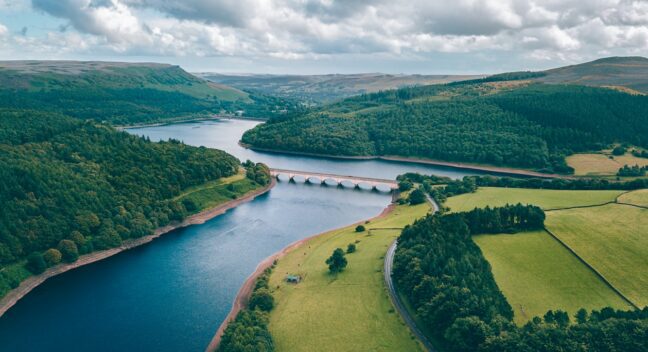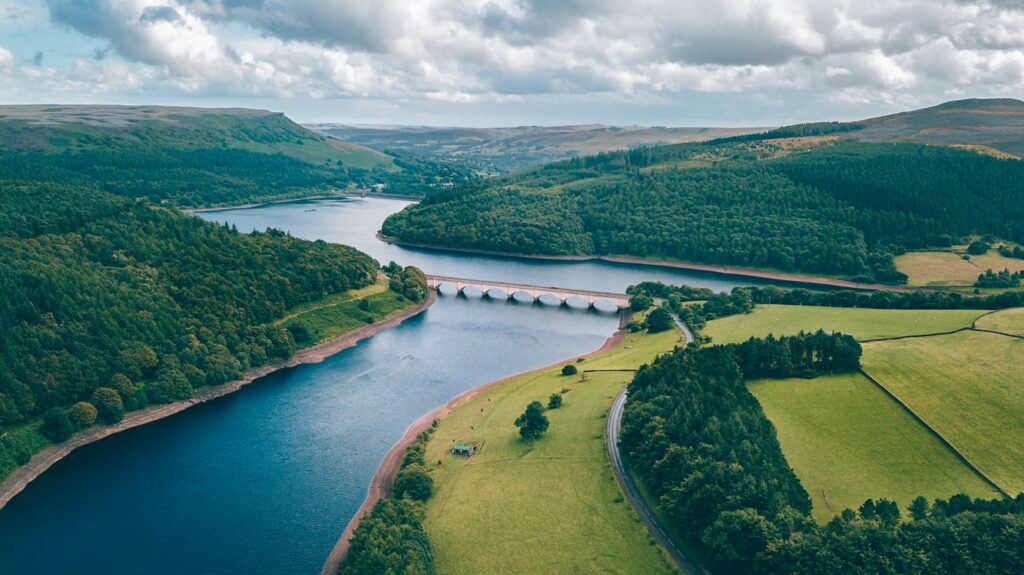Rehabilitation and restoration of rivers


DESCRIPTION
Rivers and their floodplains are subject to many human uses that can alter their hydrology, morphology and connectivity. Many European rivers and floodplains have been significantly modified over the past decades, for example by straightening the river course to allow navigation, draining floodplains to gain agricultural land or to allow for urban development, building levees to ensure flood protection, abstracting water for irrigation, dredging the sediment, etc. Land use change and land cover changes together with local climate change (e.g. in precipitation, temperature and evapotranspiration) may cause notable modification in the watershed hydrology. Hydromorphological pressures, such as physical alteration of river channels or the riparian zone, dams, locks and other barriers, are among the main reasons that surface water bodies fail to achieve good ecological status according to the European Water Framework Directive (EEA, 2019).
River and floodplain rehabilitation and restoration embraces a great variety of measures, all aimed at enhancing the natural functions of rivers, which may have been lost or degraded by human interventions. It contributes to flood risk management by supporting the natural capacity of rivers to retain water. The rehabilitation and restoration of floodplains and river wetlands provides seasonal aquatic habitats, corridors of native riparian forests and creates shaded riverine and terrestrial habitats. Furthermore, it helps to retain and slowly release discharge from water bodies, as well as to facilitates groundwater recharge and improve the water quality. River and floodplain restoration can contribute to improving the hydrological regime and coping with these climate change effects. Moreover, river wetlands can help maintain the functioning of estuarine and delta ecosystems and create natural land features that act as storm buffers, thus protecting people and property from flood damages, also related to the sea-level rise and storm surges.
Natural Water Retention Measures (NWRMs) are part of river rehabilitation and restoration and can be rather useful to reduce the flooding risk. Retention areas are meant to receive the peak discharges of rivers and therefore to prevent flooding elsewhere. Such emergency retention areas can be located along the major rivers to receive large quantities of water in extreme conditions to prevent life-threatening situations and large damage elsewhere in e.g. urban or agricultural areas.
The European Centre for River Restoration (ECRR) is an international network that promotes and builds capacity for ecological river restoration across Europe. Together with the RiverWiki tool, it is the main source of information on river restoration in Europe, collecting information on over 1000 river restoration case studies from 31 countries.
Positive experiences of river restoration are collected by CIRF, the Italian centre for river restoration that recognizes the role of these measures for climate change adaptation. Good practices of river rehabilitation and restoration in Italy are encouraged by the Emilia Romagna Region that delivered a dedicated publication illustrating the key concepts on this issue and projects carried out since the 1990s. Flood plans and River basin management plans, prepared and periodically updated within the implementation of the Water Framework Directive and the Flooding Directive are the key planning tools for restoration measures. River rehabilitation measures are, for example, included in the Water Basin Management Plans of the Eastern Alps district and the Po river district. In Croatia, the DRAVA Life Project (2015-2020) aims at restoring the Drava river through an inter-sectoral cooperation among public institutions for nature protection and NGOs, encompassing the opening and creation of new side-arms, the removal and modification of embankments and groins, as well as the preservation of retention areas and natural steep river banks. These interventions are expected to improve the overall ecological condition of the river and contribute to the preservation of the region from flood risk.
COSTS AND BENEFITS
Benefits of rehabilitation and restoration of rivers and floodplains are manifold:
- Increased protection from floods related to high precipitation events, owing to increased flow capacity of the river system during flood events, and/or reduced speed of the water flow;
- Increased protection from floods related to sea-level rise and storm surges, thanks to the buffer action of estuary and delta wetlands;
- Preservation of natural habitats, improved ecological connectivity and the related positive effects on biodiversity also in terms of improved adaptation capacity;
- Maintenance of functions of aquatic ecosystems and related services to the human society; and
- Increased groundwater recharge.
Passive river restoration, such as abandoning river maintenance, which is less expensive and easier to apply to longer stretches of river, may lead to positive environmental effects in the catchment area when compared to expensive active restoration techniques.
Moreover, river and floodplains ecosystems can have an important role in achieving climate change mitigation goals. Measures such as riparian tree planting, re-vegetation and re-naturalisation, as well as broader scale measures in the river catchment area, including sustainable soil management practices and land use changes, have a notable role in carbon sequestration and storage.
Costs are mainly related to engineering works and maintenance works but additional costs can be needed for land purchase and for compensation. Costs substantially differ within Europe on a case-by-case basis. The RiverWiki tool enables searching case studies of river restoration across Europe by selecting the cost range (from less than 1k€ to more than 10000k€).
IMPLEMENTATION TIME AND LIFETIME
The implementation time is highly dependent on the scale of application, the specific conditions of the area of intervention and the adopted measures. In general, rehabilitation and restoration of rivers and floodplains is a complex process that requires long-term interventions. It can vary from 1 year (e.g. in case of very specific and limited interventions, such as dredging or buffer strips creation) to more than 25 years (for the most complex programmes). If continuously maintained, most of the rehabilitation interventions can last indefinitely.
SOURCE FOR MORE DETALIED INFORMATION
European Commission, Flood Risk Management
European centre for river restoration (ECRR)
EEA, (2019). Floodplains: a natural system to preserve and restore
